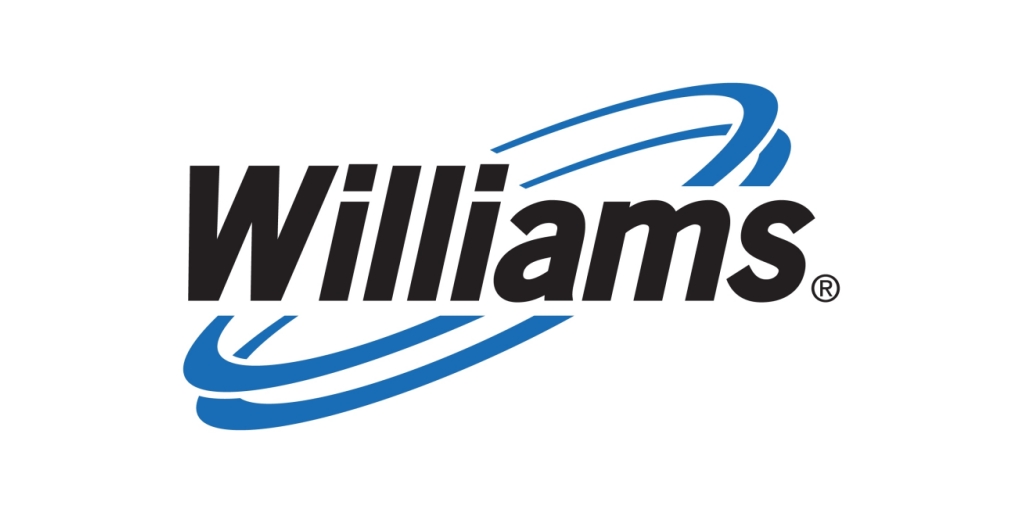DUBLIN–(BUSINESS WIRE)–The “Redox Flow Batteries: 23 Market Forecast Lines, Roadmaps, Technologies, 59 Manufacturers, Latest Research Pipeline 2025-2045” report has been added to ResearchAndMarkets.com’s offering.
Redox flow batteries are now a very active area after decades in the wilderness. That is largely because the appropriate market needs have arrived but it is increasingly reinforced by important improvements.
The new commercially-oriented 327-page report, predicts that these manufacturers will share over $20 billion of business in 2045, possibly double. Key is the now rapid progress in overcoming RFB limitations such as up-front cost and Levelized Cost of Storage LCOS. For example, a new US Department of Energy report finds that RFB are one of only three options able to drop to the $50/MWh it sees as necessary for long duration storage for grids.
The other two technologies identified need massive earthworks: RFB does not.
Solar microgrids resurgent
Equally important, safely stackable RFB with ten hours duration (MWh divided by MW) are already widely purchased for solar microgrids, a rapidly-growing market. Indeed, coping with longer solar intermittency is easily achievable with RFB and most competition cannot keep up with that trend mainly driven by solar power taking over but also wind and their attendant intermittency. RFB has economy of scale due to separate adjustment of power and capacity as needed. RFB can perform short-and long-duration storage in one unit.
Traditional vanadium gaining business
The traditional vanadium RFB is gaining business. That is mostly for systems capable of being off-grid but some grid giants are being erected in China. An even bigger one is now planned in Europe.
Iron and other approaches slash cost and hybrids go small
Much of the effort is directed at using iron and, later, other options, to save cost. For different applications, the industry is perfecting small hybrids of RFB with one side having conventional battery structure instead of a tank of liquid. These may offer long duration in our solar buildings, where space is very tight . Eliminate the expensive ion exchange membrane? Offer 50-year life? Switch it off to store power in its liquids for a year with no leak or fade?
What the report offers
The Executive Summary and Conclusions is sufficient in itself with the new infograms, three SWOT appraisals, roadmaps and 23 forecast lines, graphs with explanations. The Introduction (30 pages) explains the context of renewable energy, Long Duration Energy Storage (most of the future RFB opportunity), its best technologies compared with many diagrams and comparison tables. Here are escape routes from needing LDES, because this report is balanced, real-world appraisal of your opportunity, not the maximised dream of a trade association. The conclusion is that LDES will not be as large a market as enthusiasts portray, but huge, nonetheless.
Chapter 3. RFB design principles, research pipeline, toxigen alternatives and SWOT appraisals (63 pages) looks closely at the different chemistries, electrolytes, membranes and so on, with infograms and tables. Understand the implications of the latest research pipeline and how to deal with matters of concern to industry such as toxicity issues. Which objectives are far off, even unrealistic?
Chapter 4. compares in eight columns then profiles 59 RFB companies, mostly manufacturers, but also some key materials providers in its 132 pages. Which four are already serious about 100 day LDES RFB, embarrassing the competition facing this very real emerging need?
Chapter 5. Long Duration Energy Storage LDES RFB (28 pages) is equally detailed. It closely examines 13 relevant research advances in 2024. Parameters required, achieved and likely are revealed and explained because LDES is where the main potential of RFB now lies – from compact hybrid RFB in a building to very large RFB in a grid.
Chapter 6. Redox flow batteries for LDES beyond grids (15 pages) then takes another look at this aspect because it will probably dominate value sales 2025-2045.
Key Topics Covered:
1. Executive summary and conclusions
1.1 Purpose of this report
1.2 The different characteristics of grid utility and beyond-grid LDES 2025-2045
1.3 Eight primary conclusions: RFB markets and industry with ten infograms
1.4 19 primary conclusions concerning RFB technologies
1.4.1 The 19 conclusions
1.4.2 Research pipeline analysis: 108 papers from 2022-2024
1.4.3 Seven RFB parameters in volume sales, vanadium vs other 2025-2045
1.5 48 RFB manufacturers compared in 8 columns: name, brand, technology, tech. readiness, beyond grid focus, LDES focus, comment
1.6 Pie charts of active material and country of RFB manufacturers
1.7 SWOT appraisal of regular RFB
1.8 SWOT appraisal of hybrid RFB
1.9 SWOT appraisal of vanadium RFB against alternatives
1.10 RFB roadmap by market and by technology 2025-2045
1.11 Long Duration Energy Storage LDES roadmap 2025-2045
1.12 Market forecasts in 23 lines
1.12.1 RFB global value market grid vs beyond-grid 2025-2045 table, graph, explanation
1.12.2 RFB global value market short term and LDES 2025-2045 table, graph, explanation
1.12.3 Vanadium vs iron vs other RFB value market % 2025-2045 table, graph, explanation
1.12.4 Vanadium loses RFB share but rises elsewhere
1.12.5 Regional share of RFB value market in four regions 2025-2045
1.12.6 LDES value market $ billion in 9 technology categories with explanation 2025-2045
1.12.7 LDES total value market showing beyond-grid gaining share 2025-2045
2. Introduction
2.1 Energy fundamentals and LCOS
2.2 Racing into renewables with rapid cost reduction
2.3 Solar winning and the intermittency challenge
2.4 Escape routes from LDES
2.4.1 General situation
2.4.2 Reduction of LDES need by unrelated actions
2.4.3 Many options to deliberately reduce the need for LDES
2.5 LDES definitions and choices compared
2.6 The very different needs for grid vs beyond-grid LDES 2025-2045
2.7 Leading projects in 2025 showing leading technology subsets
2.8 LDES impediments, alternatives and investment climate
2.9 LDES toolkit
2.9.1 Overview
2.9.2 LDES choices compared
2.10 Latest independent assessments of performance by technology
3. RFB design principles, research pipeline, toxigen alternatives and SWOT appraisals
3.1 Overview, cost analysis, footprint reduction and next design challenges
3.1.1 General
3.1.2 Cost issues, cost breakdown and potential improvement
3.1.3 Footprint reduction
3.2 Types of RFB by chemistry and reaction with parameter appraisal
3.3 Basic RFB hardware and system design
3.4 Vanadium RFB design
3.5 All-iron RFB design
3.6 Iron Chromium metal ligand design
3.7 Other metal ligand RFB design
3.8 Hydrogen-bromine RFB design
3.9 Organic RFB design
3.10 RFB membrane design
3.10.1 Issues
3.10.2 Membrane difficulty levels and materials used and proposed
3.10.3 Recent RFB membrane research
3.11 RFB research pipeline
3.11.1 Overview
3.11.2 Extreme promises
3.11.3 Research pipeline analysis: 108 papers from 2022 to 2024
3.11.4 Iron-based electrolyte RFB research 2024
3.11.5 Vanadium electrolyte RFB research
3.11.6 Organic electrolyte RFB research
3.11.7 Zinc electrolyte RFB research
3.11.8 General and other metals RFB research
3.11.9 Manganese-based RFB research
3.12 Toxigen issues to tackle and current achievements by company
3.13 SWOT appraisal of regular RFB
3.14 SWOT appraisal of RFB for stationary storage
3.15 SWOT appraisal of hybrid RFB
3.16 SWOT appraisal of vanadium RFB against alternatives
4. 59 RFB companies, manufacturers, key materials providers compared and profiled in 132 pages
4.1 58 RFB companies compared in 8 columns: name, brand, technology, tech. readiness, beyond grid focus, LDES focus, comment
4.2 Profiles of 58 RFB companies (48 manufacturers, 10 in key materials/ services) in 130 pages with appraisal for beyond-grid LDES potential
5. Long Duration Energy Storage LDES RFB
5.1 Overview
5.1.1 Definition
5.1.2 Very different LDES needs for grid vs beyond-grid
5.1.3 RFB capability in the LDES world
5.1.4 Duration vs power of LDES technologies not needing major earthworks compared with others in 2025
5.2 RFB research pivoting to LDES
5.2.1 Overview of research
5.2.2 13 important RFB research advances in 2024 relevant to LDES
5.3 RFB LDES projects and calculations to 2025: hours, capacity, currently winning technology
5.4 RFB LDES achievements and aspirations 2025-2045
5.5 Winning LDES redox flow battery technologies 2025-2045
5.6 44 RFB companies likely to move to LDES capability compared in 8 columns
5.7 Leaders in the trends to beyond-grid and LDES RFB
5.8 Eight parameter maps revealing RFB competitive position in LDES
6. Redox flow batteries for LDES beyond grids
6.1 Overview
6.2 Beyond-grid: buildings, industrial processes, minigrids, microgrids, other
6.3 Beyond-grid electricity production and management
6.4 The trend to needing longer duration storage
6.5 Strategies for reducing LDES need can limit escalation of LDES
6.6 LDES toolkit for grid and beyond-grid
6.7 Market drivers of beyond-grid electricity generation notably providing LDES
6.8 Multifunctional nature of beyond-grid storage
6.9 LDES cost challenge
6.10 Big picture of LDES technology potential for grid and beyond-grid
6.11 Why beyond-grid LDES will become the largest number and value market for RFB 2025-2045
6.12 Technologies for largest number of LDES sold 2024-2045
Companies Featured
- Agora Energy Technologies
- Allegro Energy
- Ambri
- Antora
- BASF
- Beijing Herui Energy Storage
- Bryte Batteries
- Caldera
- Cavern Energy
- CellCube (Enerox)
- Ceres
- CERQ (Jena Batteries)
- Cheesecake Energy
- China CEC
- CMBlu
- Corre Energy
- Cougar Creek Technologies
- Echogen
- EDF bought Pivot Power
- Elestor
- Enervenue
- EOS
- ESS
- Everflow Energy
- eZinc
- Form Energy
- Gravitricity
- Green Energy Storage
- H2
- HBIS
- Hubei Lvdong
- Hunan Huifeng High Tech Energy
- HydraRedox
- Hydrostor
- Invinity Energy Systems
- Jolt Energy Storage Solutions
- Kemiwatt
- Korid Energy / AVESS
- Largo Inc
- LE System
- Lockheed Martin
- Mine Storage
- Mitsubishi
- nanoFlowcell
- Noon Energy
- NGK
- Pinflow
- Primus Power
- Prolox
- Quidnet Energy
- Quino Energy
- Redflow
- RFC Power
- RHEnergise
- Rhongke Power
- Salgenix
- Shanghai Electric Energy Storage
- Shmid
- State Power investment Corp.
- Stiesdahl
- Storelectric
- StorEn Technologies
- StorTera
- Storion Energy
- Stryten Energy
- Sumitomo Electric
- Suntien
- Synchrostor
- Swanbarton
- VFlowTech
- Vionx Energy
- VizBlue
- VLiquid
- Voith
- VoltStorage
- Volterion
- VoltStorage
- VRB Energy
- ViZn Energy/ EnSync
- WattJoule
- WeView
- Yinfeng New Energy
- Zhiguang
For more information about this report visit https://www.researchandmarkets.com/r/robv8r
About ResearchAndMarkets.com
ResearchAndMarkets.com is the world’s leading source for international market research reports and market data. We provide you with the latest data on international and regional markets, key industries, the top companies, new products and the latest trends.
Contacts
ResearchAndMarkets.com
Laura Wood, Senior Press Manager
press@researchandmarkets.com
For E.S.T Office Hours Call 1-917-300-0470
For U.S./ CAN Toll Free Call 1-800-526-8630
For GMT Office Hours Call +353-1-416-8900






